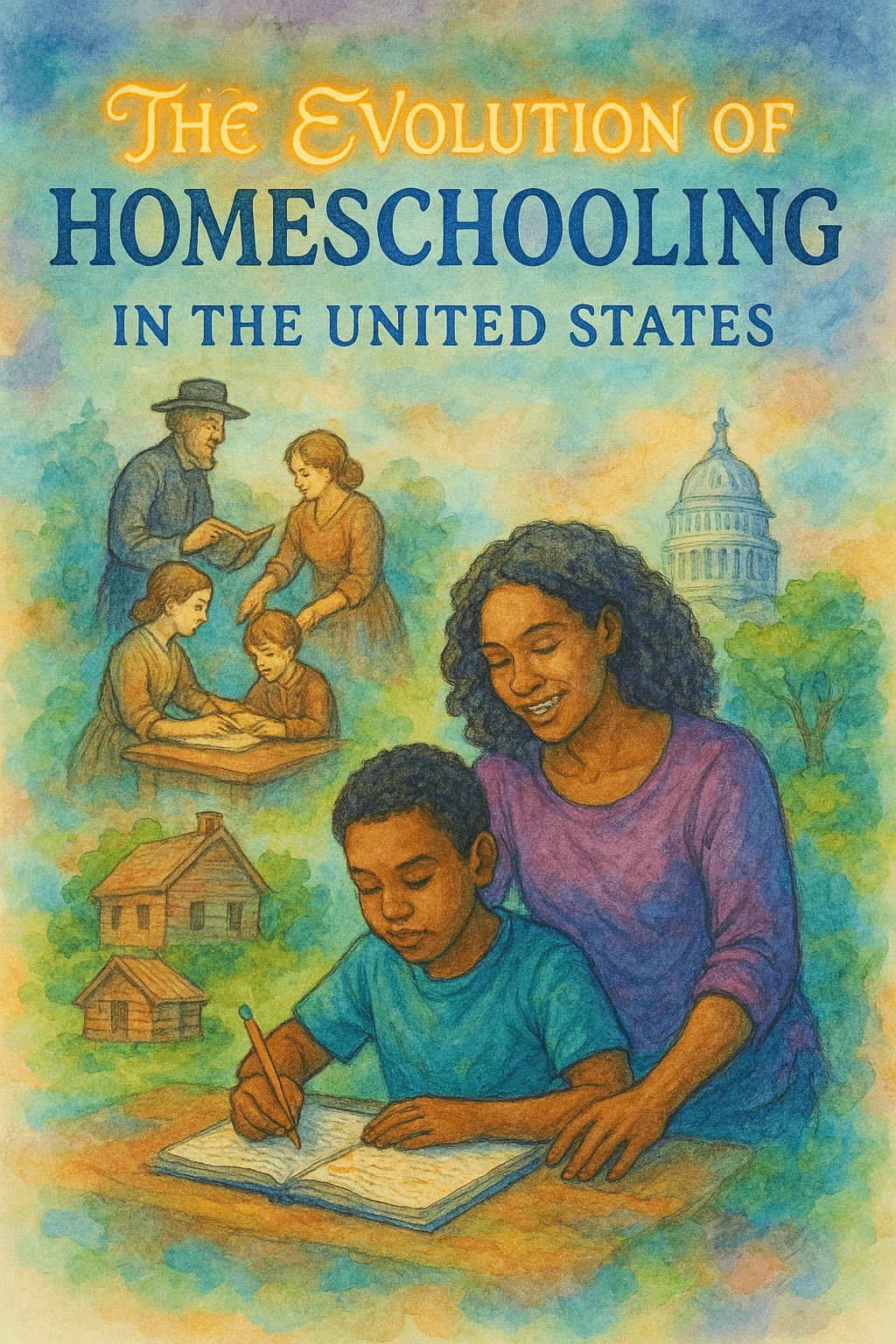Chapter 2 The Evolution of Homeschooling in the United States Add to Default shortcuts

Homeschooling in the United States has undergone a remarkable transformation—from a common practice in the nation's early days to a marginalized alternative, and now to a widely accepted educational choice. This journey reflects broader societal shifts, legal battles, and changing perceptions of education.
Early Foundations: Education Before Public Schools
In the colonial era and early years of the United States, homeschooling was the norm. Families educated their children at home, focusing on reading, writing, arithmetic, and religious instruction. This practice was not seen as an alternative but was the primary means of education, especially in rural areas where formal schools were scarce.
The Rise of Public Education and Decline of Homeschooling
The 19th century marked a significant shift with the advent of compulsory education laws, beginning with Massachusetts in 1852. These laws aimed to standardize education and assimilate diverse populations, particularly immigrants. As public schooling became institutionalized, homeschooling declined and was often viewed with suspicion or outright prohibited in many states.
The Modern Homeschooling Movement Emerges
The 1960s and 1970s saw a resurgence of interest in homeschooling, driven by educational reformers like John Holt and Raymond Moore. Holt criticized traditional schools for stifling creativity and advocated for "unschooling," a child-led approach to learning. Moore emphasized the benefits of delayed formal education and the importance of a nurturing home environment. Their ideas resonated with parents seeking alternatives to the public school system.(Great Homeschool Conventions)
Legal Battles and Advocacy
As more families turned to homeschooling, legal challenges arose due to restrictive state laws. Organizations like the Home School Legal Defense Association (HSLDA), founded in 1983, played a crucial role in advocating for homeschooling rights. Through litigation and lobbying, they worked to change laws across the country. By 1993, homeschooling was legally recognized in all 50 states, though regulations varied widely.(Homeschool Spanish Academy)
Diversification and Growth
Initially associated with educational reformers and secular families, homeschooling in the 1980s and 1990s saw increased participation from conservative Christian families. Motivated by religious convictions and concerns about public school curricula, these families contributed to the growth and diversification of the homeschooling community. Over time, homeschooling expanded to include families from various backgrounds, including those seeking tailored education for children with special needs or dissatisfaction with local schools.
Homeschooling in the 21st Century
The 21st century has witnessed continued growth in homeschooling, facilitated by the internet, online curricula, and virtual communities. The COVID-19 pandemic further accelerated this trend, with the U.S. Census Bureau reporting that the number of homeschooling households doubled to 11.1% between spring and fall 2020. Notably, the rate among Black families increased fivefold during this period.(LinkedIn)
Summary
From its early roots to its current status as a mainstream educational option, homeschooling in the United States reflects a dynamic interplay of cultural, legal, and educational forces. As families continue to seek personalized and flexible learning environments, homeschooling remains a significant and evolving component of the American educational landscape.(Parents)



